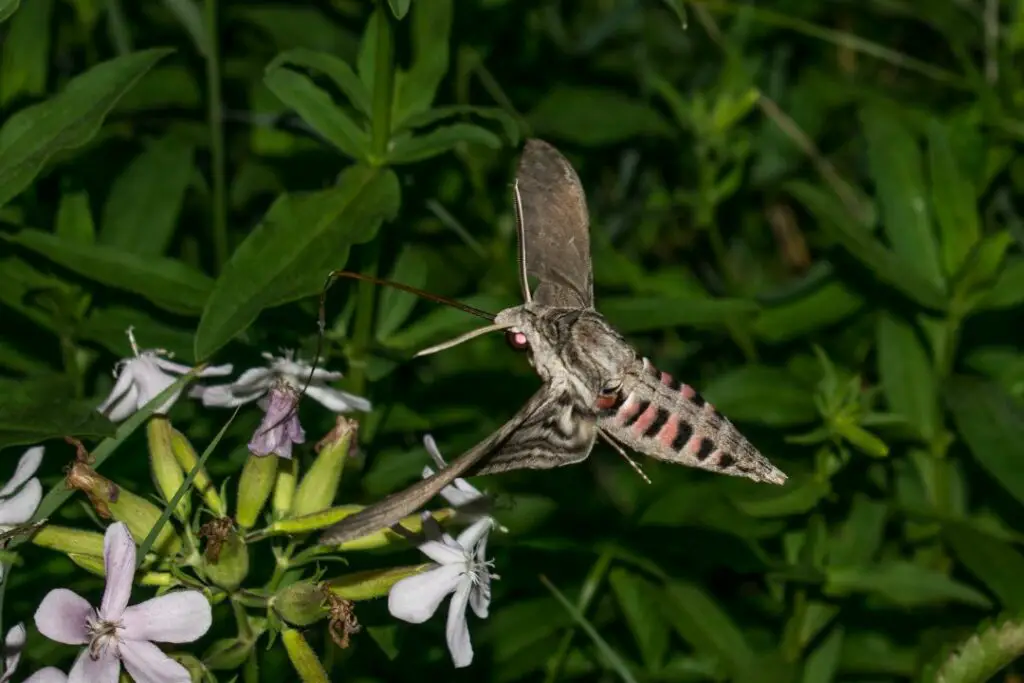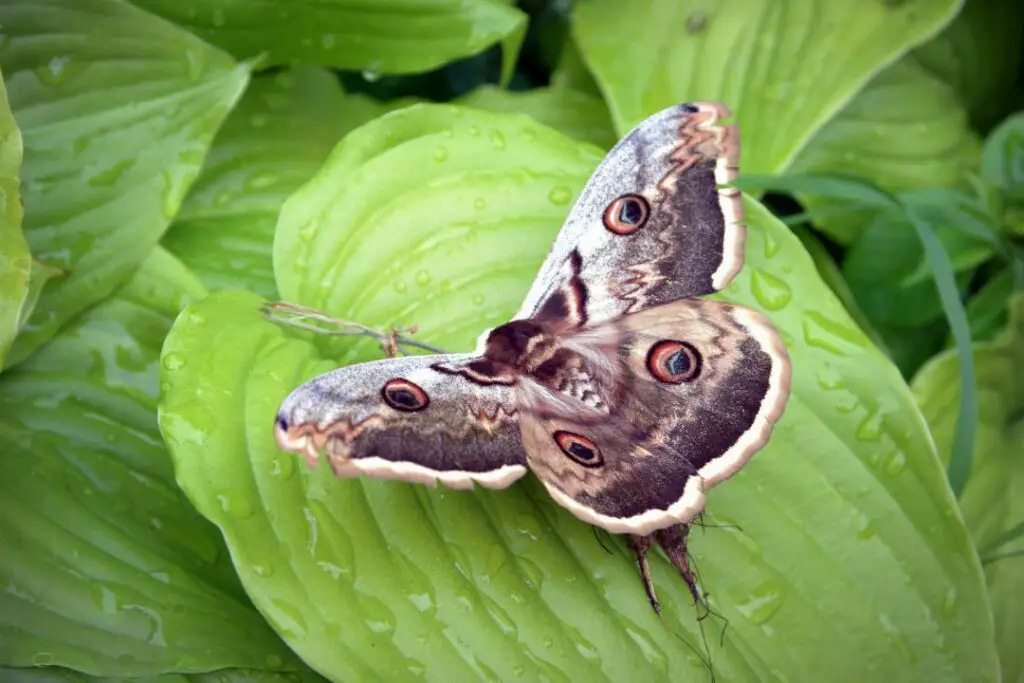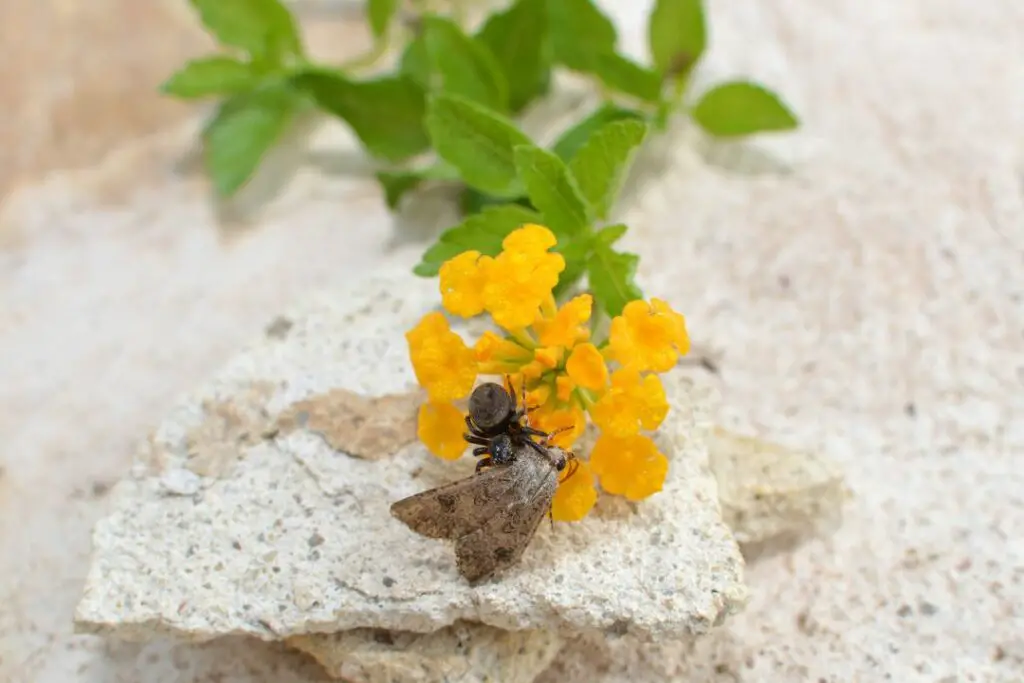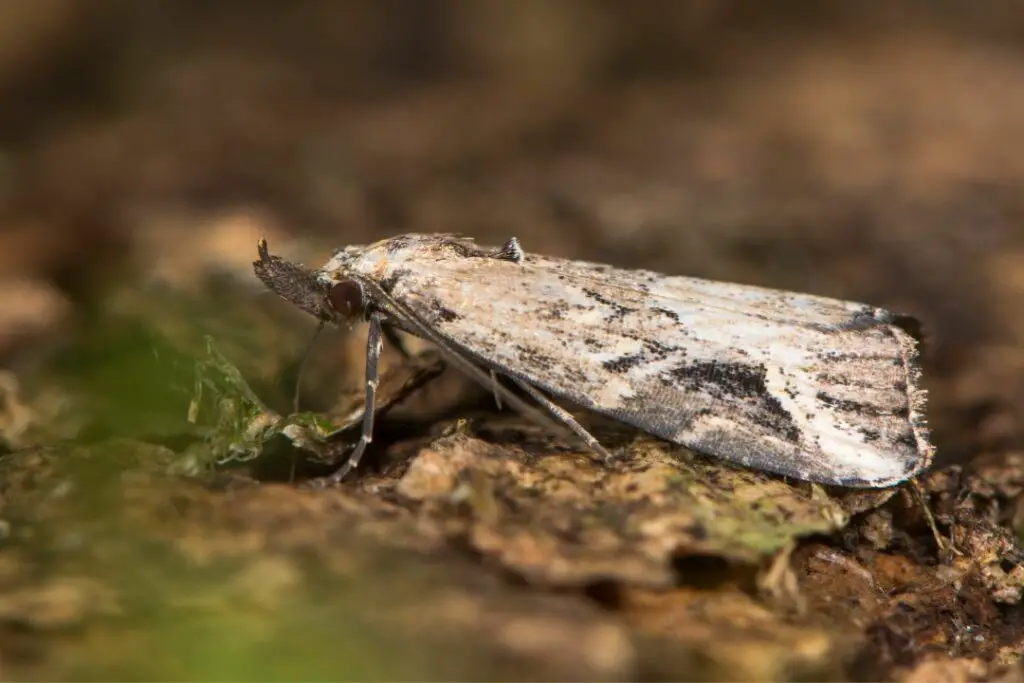Have you ever wondered what moths spend their days munching on? You’re in the right spot.
Moths are often misunderstood creatures, and their diets are as diverse as their vibrant wings. In this comprehensive guide, we’ll dive into the fascinating world of moth diets.
We’ve covered everything, from the notorious clothes moth to the much more welcome nectar-loving species that live in our gardens and backyards.
How The Moth Life Cycle Affects Its Diet
Moths are fascinating creatures with a life cycle that has an extraordinary amount of change and transformation.
So, before we look into their diets, we need to understand the moth life cycle as they undergo a complete metamorphosis comprising four distinct stages:
Egg Stage: Moth Eggs and Their Placement
Moths start their lives as eggs laid by adult female moths.
These eggs are strategically placed on host plants (plants that provide all of the nutrition for hungry caterpillars that vary depending on the moth species).
Female moths are guided by their keen sense of smell to find the ideal spot for their eggs.
These tiny eggs are typically left on the underside of leaves, ready to burst open into the next stage of life.
Larval Stage: The Appetite of Moth Caterpillars
Moth larvae (or caterpillars) hatch from these eggs to begin a feeding frenzy.
Their diet is incredibly specialized, focusing on the host plant they were laid on.
Different species of moths have specific host plants, ranging from leaves and fruits to natural fibres like wool and silk (more on this later).
This stage is crucial for the growth and development of the caterpillar, and they consume voraciously to gain the energy needed for the next phase.
Pupal Stage: Preparing for Transformation
After their appetites are met, the caterpillar enters the pupal stage.
Caterpillars are equipped with specialized glands called spinnerets located near their mouths.
They produce a liquid substance composed of proteins that harden into silk fibres when exposed to the air.
By carefully using its mouthparts to manipulate these silk threads, it starts to build a cocoon or chrysalis.
Once it’s encased, it won’t eat at all. Instead, it relies on the energy stored from its caterpillar days to fuel its metamorphosis into adulthood.
Adult Stage: The Versatile Diet of Adult Moths
Once the transformation is complete, the adult moth emerges from its cocoon.
Their diet becomes nectar from flowers, using their long proboscis to access the sweet liquid.
Now, they only need to sustain their activities like mating and searching for suitable spots to lay their eggs.
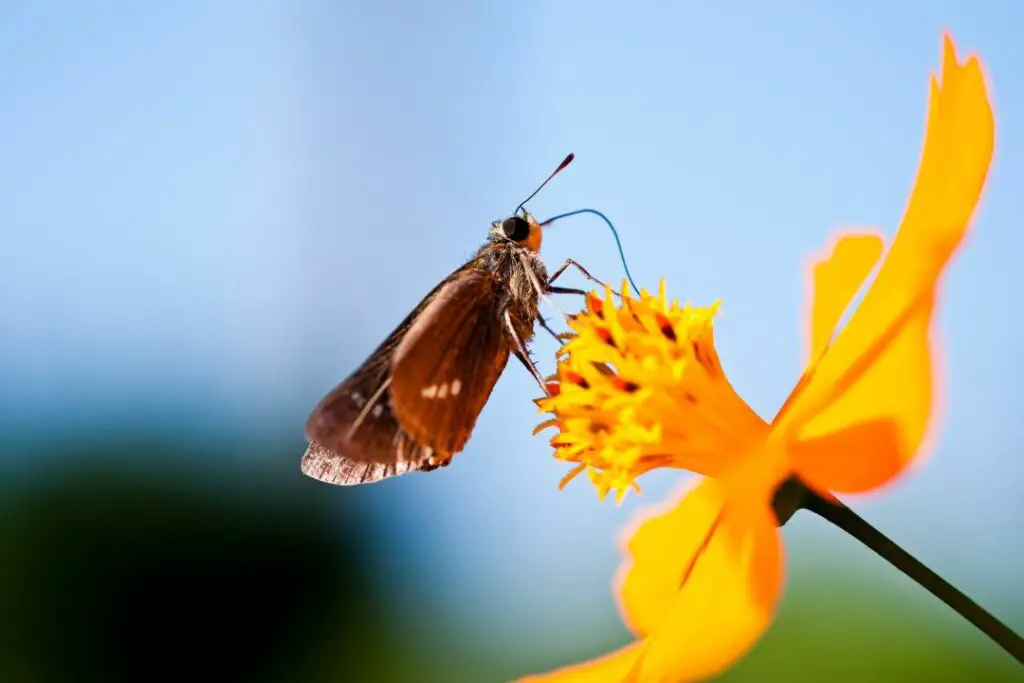
What Do Adult Moths Eat?
Now we know how much diet changes from caterpillar stage to a fully grown moth, let’s check out what’s on the menu, and it’s not always what you might think.
Nectar, for the most part
The majority of adult moths are nectar feeders. They have a specialized feeding structure called a proboscis.
It’s a long, tubular mouthpart allows them to access the sweet liquid inside flowers. These moths play a crucial role in pollination, similar to butterflies.
They’re most active during the night and hunting down the fragrant blooms of plants.
Some are fussy about specific types of flowers, while others are generalists.
Meet the moth – The Hummingbird Hawk-Moth (Macroglossum stellatarum) is a nectar-feeding moth known for its hovering flight, similar to hummingbirds. You’ll often find it sampling honeysuckle and petunias.
Fruit feeders
Some moths are particularly fond of rotting fruits, and their feeding can even speed up decomposition.
Depending on their species, they can be active day or night, and they’re a bit of a nightmare if they take up home in your favourite fruit tree.
Meet the moth – The Codling Moth (Cydia pomonella) is a fruit-feeding moth known for infesting apple and pear trees. The caterpillar stage damages fruit, making it inedible.
Puddling moths
This strange practice occurs when moths (and butterflies) gather in puddles, damp soil, or other moisture sources to feed on dissolved minerals and salts.
Instead of flower nectar, they suck up the dirty water, absorbing the nutrients into their body and then expel it from their rear end.
Some moths can do this for hours, stocking up on the energy they need to mate or lay eggs.
Bloodsuckers
One particularly intriguing moth species, the vampire moth (Calyptra thalictri), has a rather unexpected dietary preference.
They feed on the blood of vertebrate animals like us. Their proboscis has evolved the ability to pierce the skin and extract blood.
Check out the creepy video below that shows a willing victim offering their hand to this alien-like moth.
Nothing at all
Some types of moths don’t even have the equipment to feed.
The moth larvae eat ferociously, and when the moth emerges from its cocoon, it takes flight with a finite amount of energy.
It will seek a mate, reproduce and lay eggs (if it’s female), all without a single sip of food.
Now we know what moths need or don’t need to stay alive, let’s turn our gaze to the larval moths that seem to cause all the damage.
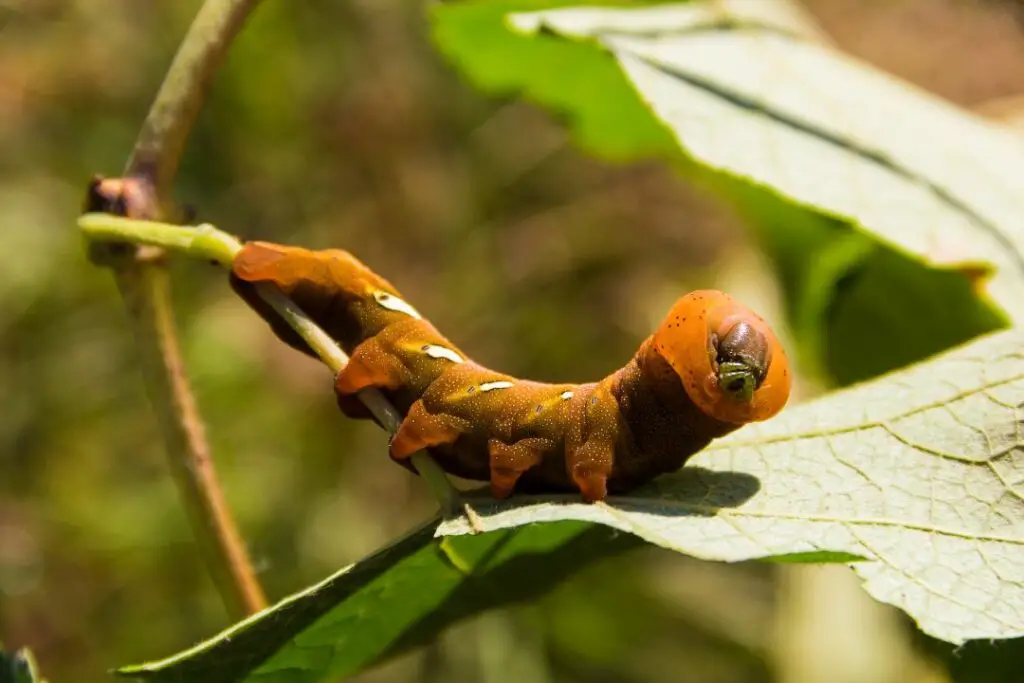
What Do Moth Larvae Eat?
Caterpillars are the larval stage of moths and butterflies, and they have varying diets depending on their species.
These remarkable creatures have adapted to feed on various plants and leaves, sometimes even other insects. Let’s explore the different types of caterpillar diets in more detail.
*Additional reading -What Do Caterpillars Eat? Munching From Leaf To Larva
Leaf-eating
Leaf eaters are the first thing that comes to mind when you think about hungry caterpillars.
They spend their days munching on the leaves of plants, using their strong mandibles to chew and consume copious amounts of plant matter.
Monarch caterpillars feed exclusively on the leaves of milkweed plants, which contain toxic compounds that make the caterpillars unpalatable to their predators.
*Pro tip – Worried about your garden? Use row covers, fine mesh netting, or screen material to cover susceptible plants.
Hair and clothes
Clothes moths will lay their eggs in wool and natural fibres wherever they can find them, and if you’ve got moths in your home, it can be a real problem.
Moths are attracted to light, so finding them inside is not unusual.
They consume the keratin in fibres, meaning they can and will eat clothes, wool, pet fur and anything else they can get their mandibles on.
The larvae of the clothes moth will eat for around two months before emerging as the Common Clothes Moth and starting the process all over again.
*Pro tip – Keeping your clothes in a sealed wardrobe or drawers is the best way to avoid unwanted damage to clothes.
Your kitchen stores
The pantry moth is a bit notorious because of its larvae’s ability to eat anything they find.
And these guys don’t just eat natural foods. They’ll happily consume cereals and grain.
Worse yet, they can easily chew through plastic and cardboard containers, making them a menace once they invade your home.
*Pro tip – Remove all affected foods and clean any food storage areas thoroughly with soapy water to prevent the problem from happening again.
When Do Moths Eat?
Moths are nocturnal for the most part, so the majority of their feeding occurs overnight, with butterflies taking the day shift.
There are a few notable exceptions to the rule, the Tiger Moth being a perfect example.
It may be at the bottom of the food chain, but its brightly coloured wings make it appear much more fearsome to potential predators.

